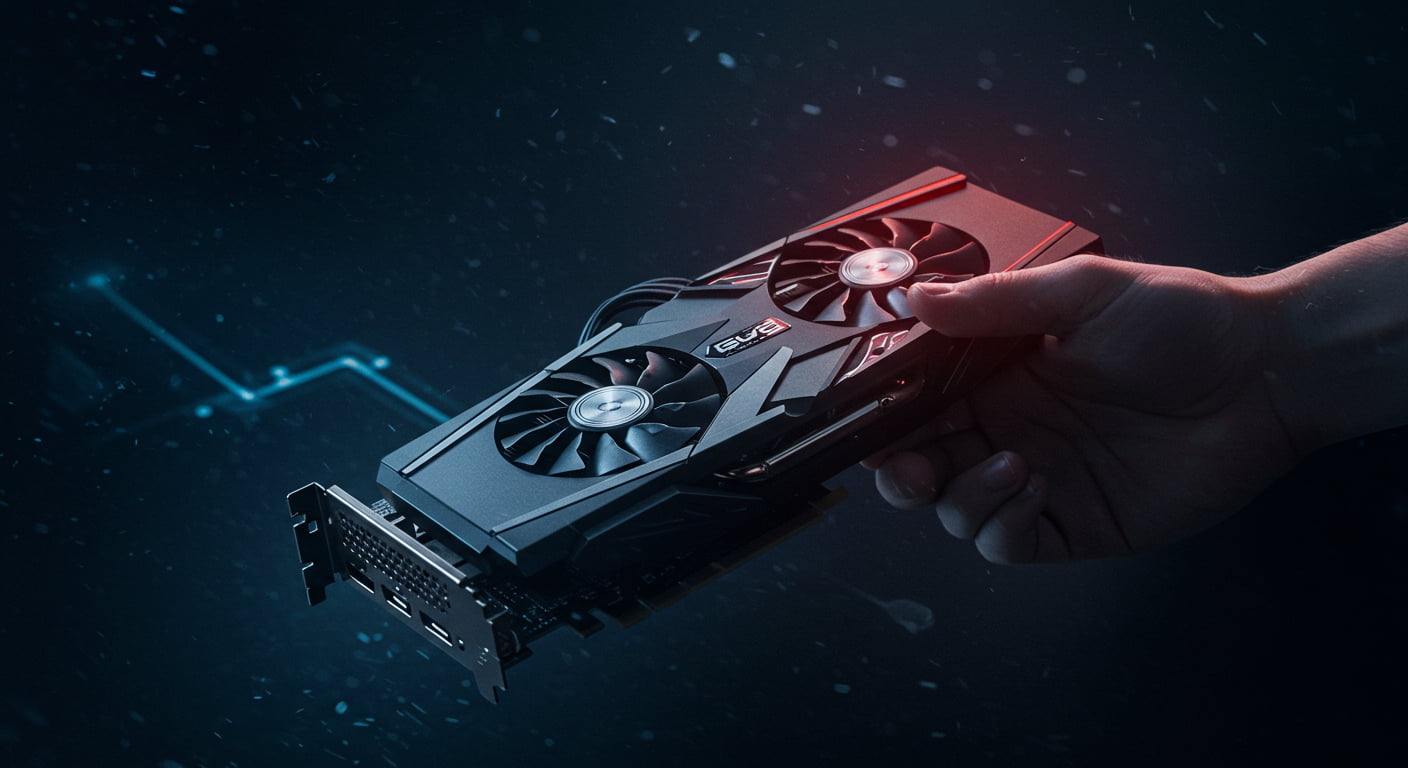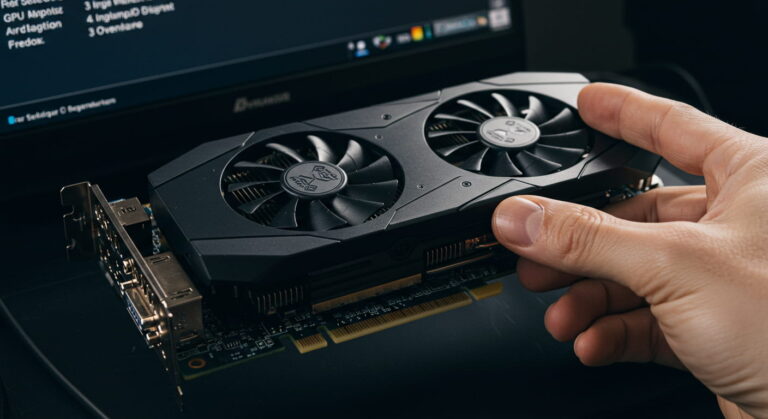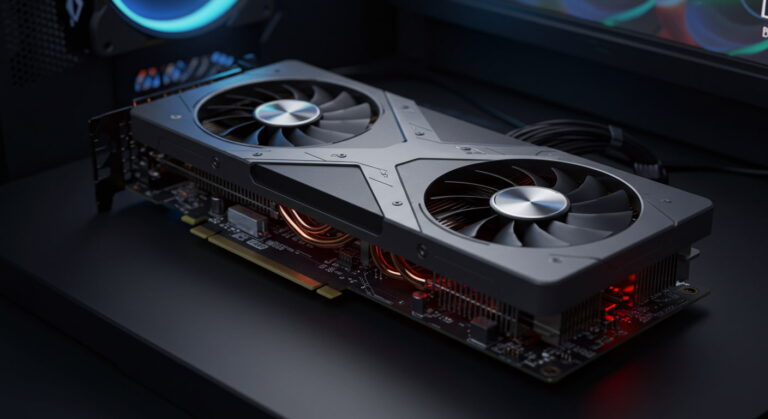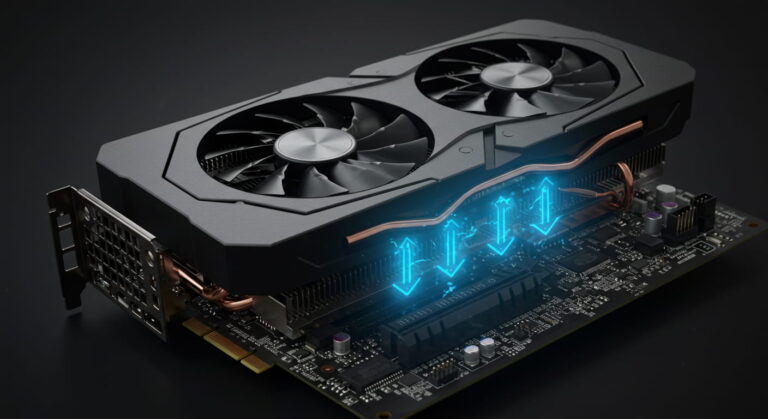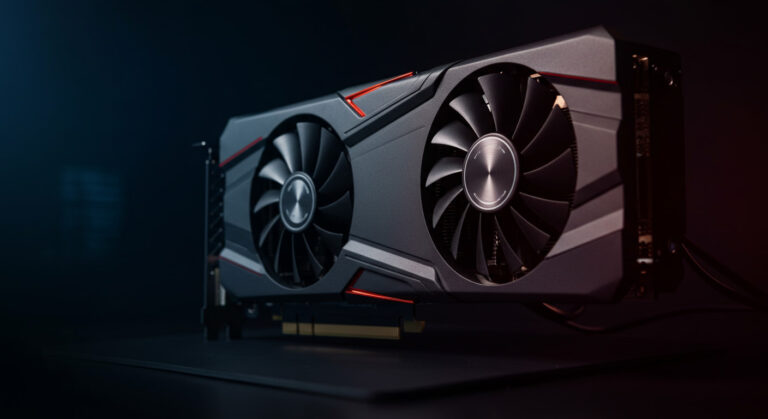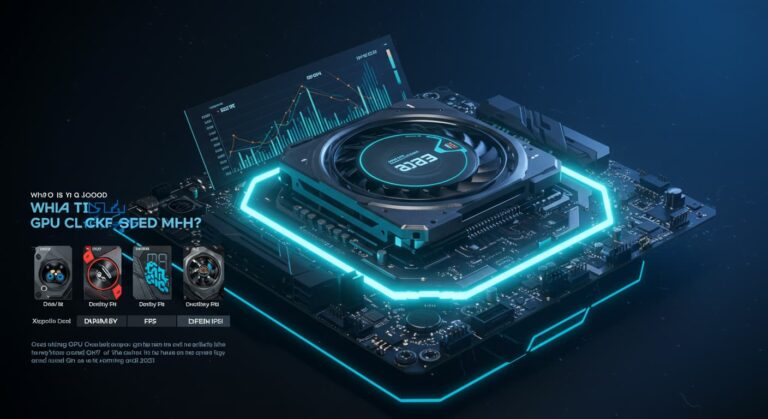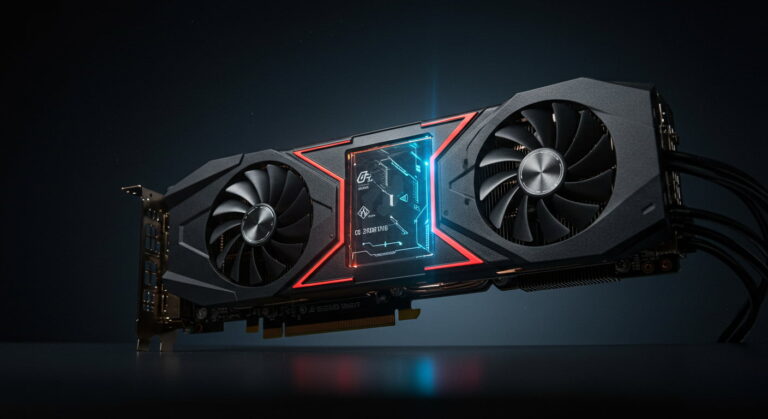Average GPU Temp While Gaming – Safe Range, Tips & Guide!
1. Introduction
When gaming, your GPU (Graphics Processing Unit) is the most active part of your computer. It handles visual effects, graphics rendering, and performance. Because of this, it gets hot quickly. Monitoring the average GPU temp while gaming is essential for smooth and safe performance.
If your GPU temperature is too high, it may cause performance drops, lag, or even damage over time. On the other hand, a GPU that runs too cool might not reach its full potential. The goal is to keep your GPU within the ideal temperature range while gaming. Understanding what the normal, safe, and average GPU temperatures are can help you avoid overheating and ensure that your graphics card performs efficiently for years.
2. What Should Be the Normal GPU Temp While Gaming?
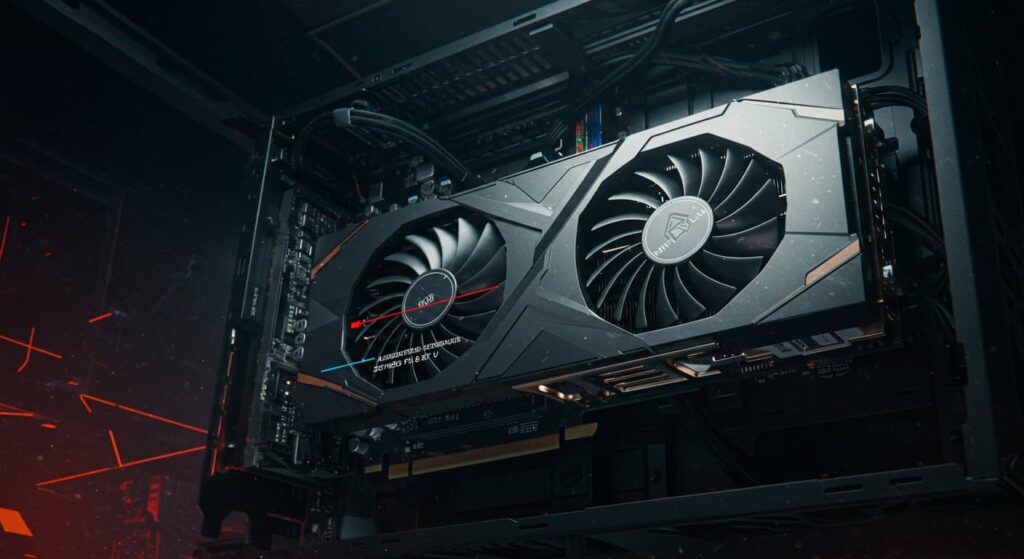
The normal GPU temperature during gaming usually lies between 60°C and 85°C for most modern GPUs. This range allows for optimal performance without risking damage. The average GPU temp while gaming may vary depending on the game’s intensity, the GPU model, and the room temperature.
Heavy games like Cyberpunk 2077 or Assassin’s Creed Valhalla push your GPU harder, while lighter games keep it cooler. If your GPU stays below 85°C, it’s operating normally. Always make sure your PC case has good airflow and clean fans to help maintain consistent temperatures.
3. What Is a Safe GPU Temperature While Gaming?
A safe GPU temperature while gaming generally falls between 60°C and 85°C, depending on your card and cooling system. Most GPUs are built to handle temperatures up to 90°C for short periods, but staying below 85°C is safer in the long run.
You can keep your average GPU temp while gaming safe by using proper ventilation, regularly cleaning your fans, and monitoring with software like MSI Afterburner. Safe temperatures mean your GPU performs steadily without throttling or shutting down due to heat.
4. Is 70°C Hot for a GPU While Gaming?
No, 70°C is not hot for a GPU while gaming. It’s actually a comfortable and normal temperature for most GPUs during demanding gameplay. Many gamers report this as their average GPU temp while gaming, and it’s well within the safe range.
If your GPU stays around 70°C, your cooling setup is working perfectly. However, you should keep checking your temperatures regularly, especially during summer or when playing heavy games, to ensure they don’t go higher than 85°C.
5. Is It Okay for My GPU to Run at 80°C?
Yes, 80°C is fine for a GPU while gaming. Many GPUs are designed to handle temperatures up to 90°C. So, if your average GPU temp while gaming is around 80°C, it’s still safe.
But if your GPU consistently stays above 80°C, you might want to check your airflow, clean your case fans, and make sure the GPU’s thermal paste is in good condition. A few degrees cooler is always better for long-term hardware health.
Also read: Ideal GPU Temp While Gaming
6. Normal/Safe GPU Temps While Gaming
Here’s a quick guide to understanding GPU temperatures:
- 40°C–60°C → Idle or light use
- 60°C–75°C → Normal range while gaming
- 75°C–85°C → High but safe range
- 85°C–90°C → Hot, needs attention
- 90°C+ → Unsafe and risky
Keeping the average GPU temp while gaming under 85°C ensures stable performance. It’s always good to monitor these numbers during long gaming sessions.
7. Complete Guide to Optimal GPU Temperatures in 2025
GPUs released in 2025 are more efficient and smarter at managing heat. Cards like the RTX 4090 or RX 7900 XT use advanced cooling systems to stay cool even under pressure. The average GPU temp while gaming for these cards is between 65°C and 80°C.
AI-based fan controls, vapor chambers, and better airflow systems have made it easier to maintain stable temperatures. So, modern GPUs not only perform faster but also remain cooler and quieter compared to older models.
8. What’s a Good (and Safe) GPU Temperature When Gaming?
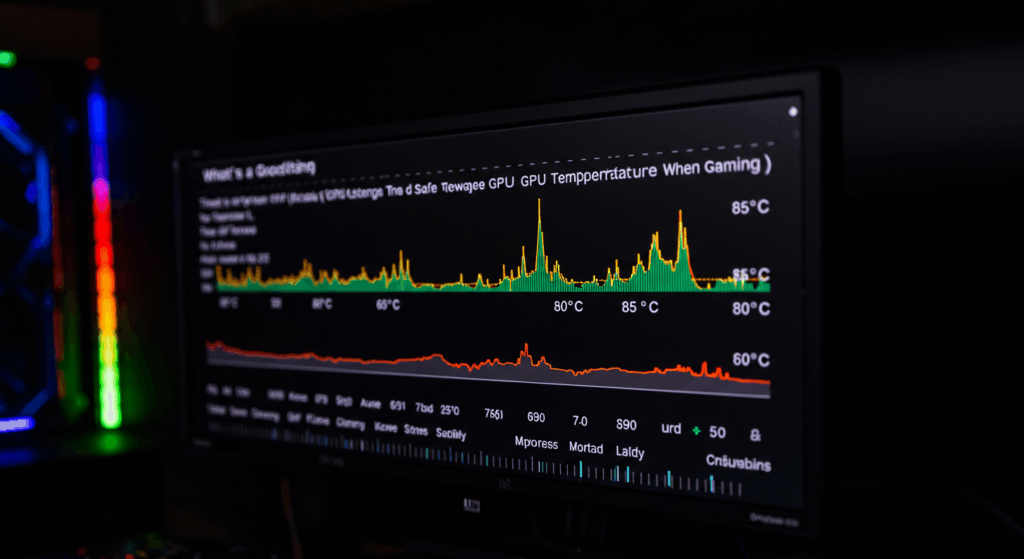
A good and safe GPU temperature during gaming is 65°C to 80°C. If your GPU stays in this range, it’s working efficiently and safely. The average GPU temp while gaming in this range ensures smooth performance and longer hardware life.
Temperatures above 85°C might lead to throttling, which reduces performance. Keeping your GPU cool also helps reduce fan noise and power consumption, leading to a better gaming experience.
9. What Is the Average GPU Temp While Gaming in 2025?
The average GPU temp while gaming in 2025 is around 65°C to 80°C. Newer GPUs are built with energy efficiency in mind, so they don’t produce as much heat as older models. For example, NVIDIA’s RTX 40 series and AMD’s RX 7000 series stay cooler even under load.
Better cooling solutions, improved thermal paste, and smarter power management allow GPUs to maintain high performance while keeping temperatures stable. Monitoring tools now also automatically adjust fan speed for the best results.
10. Average GPU Temperature Comparison: Nvidia vs AMD
NVIDIA and AMD GPUs have different temperature behaviors. On average, NVIDIA GPUs tend to run slightly cooler than AMD because of their design and power usage. The average GPU temp while gaming for NVIDIA is around 65°C–78°C, while AMD cards may reach 70°C–82°C.
Both are within safe ranges, and the difference isn’t huge. The main factors that affect GPU temperatures are cooling system design, case ventilation, and room temperature. Whether you use AMD or NVIDIA, maintaining good airflow is the key to stable performance.
11. Ideal GPU Temperature Range for Smooth Gaming Performance
For smooth and stable gaming, your GPU should stay between 60°C and 80°C. This is considered the best operating range for both AMD and NVIDIA cards. Within this temperature range, your GPU can maintain its highest performance without thermal throttling.
When your average GPU temp while gaming stays below 80°C, your system delivers consistent frame rates and efficient performance. Higher temperatures can make the GPU fans louder and cause short performance drops. To keep the temperature ideal, ensure that your PC has good airflow, clean dust filters, and that fans work properly.
Also read: GPU Compatibility with Motherboard
12. Average GPU Temp While Gaming at 1080p, 1440p, and 4K
The gaming resolution you choose directly affects GPU temperature. At 1080p, most GPUs run cooler since the workload is lighter — around 60°C to 70°C on average. At 1440p, the GPU works harder, pushing the average GPU temp while gaming to around 70°C to 80°C.
At 4K resolution, the GPU is under maximum stress, so temperatures can reach 80°C to 85°C. This is normal for high-end gaming. To maintain good cooling, ensure that your case has strong airflow and consider using a GPU cooling pad or liquid cooling setup for higher resolutions.
13. Average GPU Temp While Gaming in Laptops vs Desktops
Laptops generally run hotter than desktops because of compact designs and limited airflow. The average GPU temp while gaming in laptops ranges from 75°C to 90°C, while desktops typically stay between 65°C and 80°C.
To manage heat on laptops, keep vents clear, use a cooling pad, and avoid playing on soft surfaces that block airflow. Desktops, on the other hand, benefit from larger fans and better ventilation. Regular maintenance and proper airflow setup can make a huge difference in temperature control.
14. Normal GPU Temp While Gaming Laptop
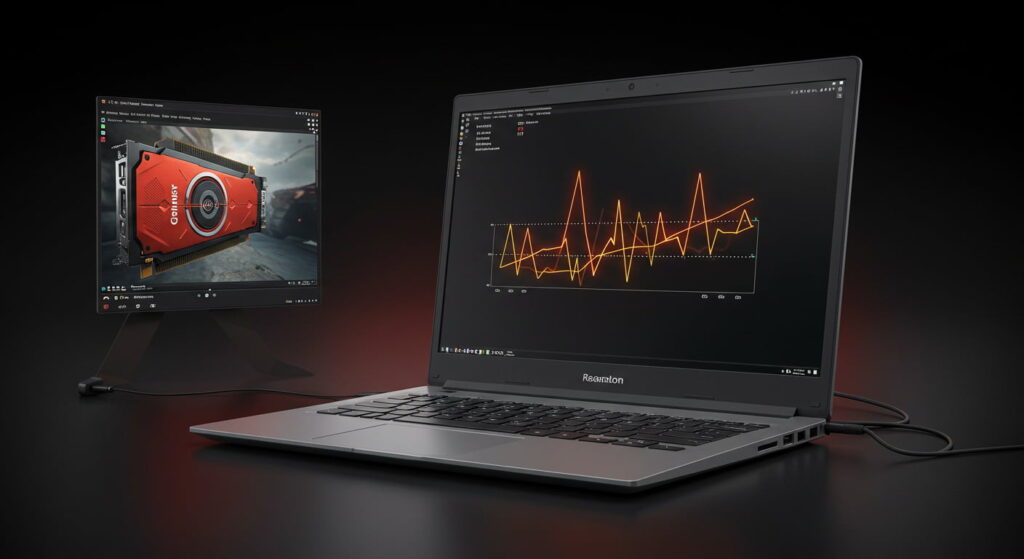
For gaming laptops, a temperature between 80°C and 90°C is considered normal when playing demanding games. These devices are built to handle higher heat compared to desktops. However, maintaining a lower average GPU temp while gaming helps improve long-term reliability.
To keep your laptop cooler, clean the vents regularly, use a cooling pad, and ensure the laptop’s fan curve is properly configured. Avoid gaming in hot rooms, as ambient heat directly affects laptop performance and GPU health.
15. How Ambient Room Temperature Affects GPU Temp While Gaming
Room temperature plays a major role in how hot your GPU gets. If your room is warm, your GPU will also run hotter. For example, a room at 30°C can increase the average GPU temp while gaming by 5–10 degrees.
To control this, make sure your room has good ventilation and keep your PC away from walls or heat sources. Using an air conditioner or fan can help reduce ambient temperature, allowing your GPU to stay within safe limits.
16. What Causes High GPU Temperatures During Gaming?
Several factors can cause high GPU temperatures. Dust buildup, poor airflow, blocked vents, and overclocking are the most common reasons. Even outdated thermal paste can raise the average GPU temp while gaming.
To fix this, clean your PC regularly, check that fans are spinning correctly, and ensure your cables aren’t blocking airflow. Applying new thermal paste every few years can also help maintain cooler temperatures and better performance.
Also read: GPU Memory vs Dedicated GPU Memory
17. Average GPU Temp While Gaming After Overclocking
Overclocking increases performance by boosting clock speeds, but it also raises heat output. After overclocking, the average GPU temp while gaming can increase by 5°C to 10°C. This is normal, but you must monitor it carefully to prevent overheating.
Use reliable software like MSI Afterburner to adjust fan speeds and check stability. Always test your GPU after overclocking to ensure it doesn’t exceed 85°C during gameplay. Proper cooling can help you enjoy the extra power safely.
18. How Long Can a GPU Run at High Temperatures?
A GPU can safely run at high temperatures for short periods, but constant exposure to 85°C–90°C can reduce its lifespan. The average GPU temp while gaming should ideally stay under 80°C for long-term health.
Running too hot for too long can degrade thermal paste, cause fan wear, and reduce efficiency. To extend your GPU’s life, keep it cool, maintain airflow, and avoid running it at full load for extended hours without breaks.
19. Average GPU Temp While Gaming Reddit
On Reddit, gamers often share real-world data about GPU temperatures. Most users report that their average GPU temp while gaming stays between 65°C and 80°C depending on hardware and cooling setup.
Many recommend using undervolting, replacing thermal paste, and adjusting fan curves to keep temperatures low. These community discussions are helpful for comparing results across different GPUs and learning what’s normal for your setup.
FAQs About Average GPU Temp While Gaming
1. What is the average GPU temp while gaming?
It’s usually between 65°C and 80°C, which is safe for most GPUs.
2. Is 70°C good for gaming?
Yes, 70°C is a normal and safe temperature while gaming.
3. Is 80°C too hot for a GPU?
No, it’s safe but close to the upper limit. Keep it below 85°C if possible.
4. What temperature is bad for a GPU?
Anything above 90°C can be harmful in the long run.
5. Why does my GPU heat up while gaming?
High performance and poor airflow raise your average GPU temp while gaming.
6. How can I keep my GPU cool?
Clean dust, improve airflow, and use a good cooling setup.
7. What is normal GPU temp for laptops?
Gaming laptops run hotter — around 75°C to 90°C is normal.
8. Does room temperature affect GPU heat?
Yes, a warm room increases the average GPU temp while gaming.
9. Is 100% GPU usage okay while gaming?
Yes, it’s fine if temperatures stay under 85°C.
10. Does overclocking raise GPU temperature?
Yes, overclocking increases heat, so monitor temps carefully.
Conclusion:
Keeping your average GPU temp while gaming in check is the key to smooth performance and hardware safety. Most GPUs perform best between 60°C and 80°C, though some can handle up to 85°C. Regular cleaning, proper airflow, and good cooling solutions can help maintain these ideal temperatures.
By monitoring your GPU temperatures and maintaining a healthy system, you can prevent overheating, ensure consistent gaming performance, and extend the lifespan of your graphics card. Always remember that stable temperatures mean stable gaming — your GPU will thank you for it!
Related post:
